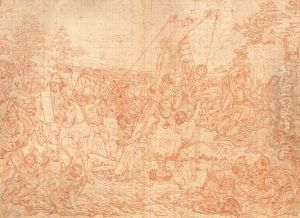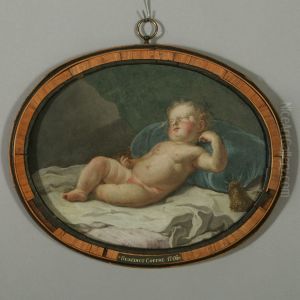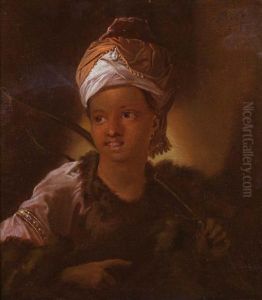Benoit I Audran Paintings
Benoit I Audran, born in 1661 in Lyon, France, was a distinguished French engraver, part of the prolific Audran family, which played a significant role in the development of French engraving during the 17th and 18th centuries. The Audran family's contribution to the art of engraving spanned several generations, with members including his uncle, Charles Audran, his father, Germain Audran, and his brothers, among them the well-known Gerard Audran. This familial lineage provided Benoit with an unparalleled artistic education and environment, fostering his development into a master engraver.
Benoit I Audran's career was marked by his exceptional skill in engraving, particularly in the realm of religious and portrait engraving. He became known for his ability to translate paintings into engravings with remarkable fidelity and detail, a skill that garnered him significant attention and commissions from prominent figures of his time. His works often featured intricate detail and a masterful use of line, capturing the essence and emotion of the original paintings. Among his notable achievements was his admission to the Royal Academy of Painting and Sculpture in Paris, an honor that signified his standing as one of the foremost engravers of his era.
Throughout his career, Benoit I Audran's work was characterized by a deep commitment to the art of engraving, contributing to its evolution during a period of significant artistic development in France. His legacy is not only found in his contributions to the Audran family's artistic heritage but also in his influence on the practice of engraving in France and beyond. Benoit I Audran passed away in 1721, leaving behind a body of work that continues to be celebrated for its technical excellence and artistic beauty. His engravings remain a testament to the skill and dedication of one of the early 18th century's leading artists in the medium.


